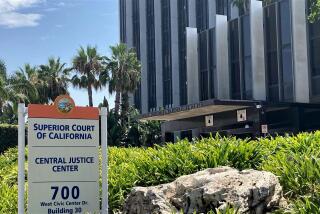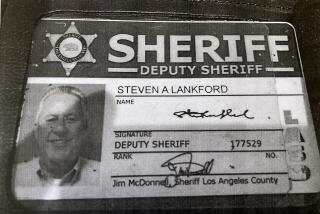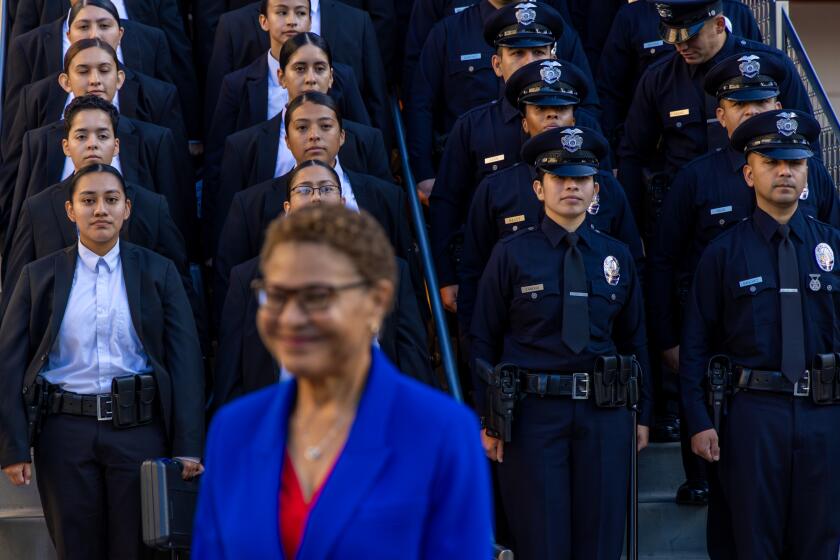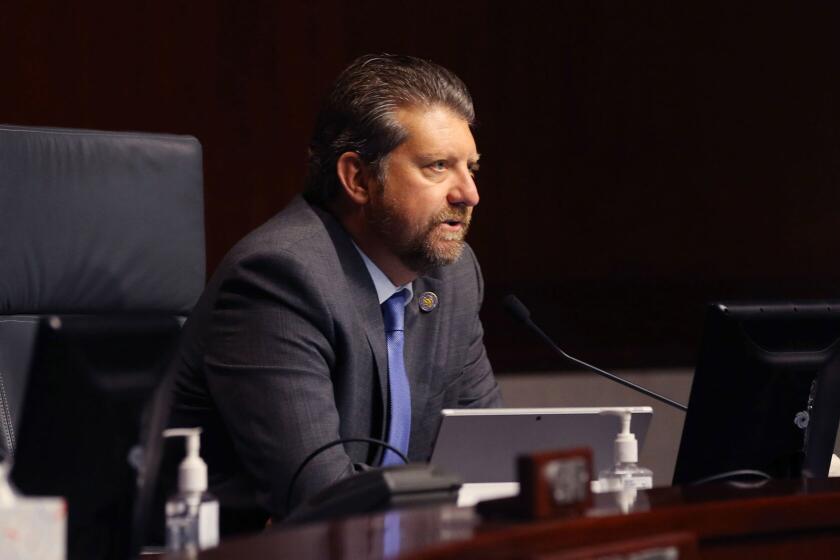O.C. Gets 6 Tons of Paperwork on Transferred Murder Case : Trial: Local attorneys defending accused Northern California serial killer Charles Ng face arduous task of sifting through mountain of documents.
- Share via
SANTA ANA — What weighs six tons and may be Orange County’s least-wanted resident?
It’s the recently arrived murder case against suspected serial killer Charles Ng, facing trial for a dozen slayings at a remote mountain cabin.
The mammoth 10-year-old case, transferred from rural Calaveras County in Northern California, filled the trailer of a big rig when it was shipped to the county public defender’s office--350 boxes crammed with about 100,000 pages of police reports, witness statements and other evidence.
The mountain of documents--enough pages to fill eight sets of World Book Encyclopedias--was a jaw-dropping sight for the two public defenders who must master it before they can go to trial.
“My mouth was hanging open as they were bringing it in,” said Deputy Public Defender William G. Kelley, the lead defense attorney. “I was sitting there thinking to myself, ‘What have I done?’ ”
The trial was sent to Orange County by a Northern California judge after Ng’s previous attorneys complained that their client could not receive a fair trial in the rural area where so many of the victims had lived. The Orange County public defender’s office fiercely resisted the move, arguing that the bankrupt county could not afford the expenses required to put up an adequate defense.
That question was settled in March when the Board of Supervisors approved an arrangement under which the state and Calaveras County will reimburse all costs. The case has already cost about $6 million, and it is estimated that the final price tag could reach $10 million.
But the case remains a less-than-cherished newcomer, toting with it some monumental procedural problems--defense attorneys must fly to San Francisco every time they want to examine physical evidence, for example.
The case is tentatively set for trial in Orange County Superior Court on Sept. 6, 1996. But Kelley figures he and his co-counsel, Allyn Jaffrey, will need at least an extra year and a half to get ready for the case, which carries a possible death sentence.
The case is huge because it is really many murder cases in one. Investigators allege that Ng, a 33-year-old former Marine, and an accomplice, Leonard Lake, murdered 12 people during a yearlong spree at a ranch in the Sierra foothills in 1984 and 1985. One of those victims was originally from Garden Grove, Robert Scott Stapley, 26, whose body--bound, shot and buried in a sleeping bag--was found near the cabin.
Ng was arrested in Canada in 1985 and extradited in 1991. Lake, 39, killed himself with cyanide days after his arrest.
Stapley’s parents complain that the glacier of paperwork is an infuriating sign of how successfully Ng has manipulated the court system.
“Fifty percent of it is BS. A lot of it is frivolous motions designed to delay the case,” said Stapley’s mother, Lola, of Garden Grove. “The enormity is because they let it drag on so long.”
The staggering size and complexity of the case also forced the prosecutor, Calaveras County Dist. Atty. John Martin, who has a staff of just three other attorneys, to call in help. A Los Angeles-based deputy attorney general has been assisting him.
Martin declined to comment on trial preparations.
“It’s the biggest case in Calaveras County,” said Matt Ross, a spokesman for the attorney general’s office. Calaveras County has a population of about 38,700.
As newcomers to the case, Kelley and Jaffrey have to catch up on 10 years of documents, a task made more daunting because the material was never indexed on computer and much of it arrived in disarray. The lawyers peeled open two boxes to find nothing but shredded documents.
Judges’ declarations were buried amid staplers and toilet paper that had been stored with the file in a two-story Sonora condo leased by the previous lawyers. Other boxes and files were unlabeled; Kelley grumbled that it would take half a day just to decipher a single file labeled, ominously, “missing originals.”
“Just finding the stuff and getting it in order--that’s what we do here now,” said Kelley. “It’s an organizational nightmare.”
A team of nine staffers from the public defender’s office--the two lawyers, three investigators, three paralegals and a secretary--have been assigned to the Ng case. The agency took over two neighboring offices in its leased office building solely to house the bookshelves and boxes of paperwork.
Two paralegals will spend most of their time entering trial information into a computer so that attorneys can navigate their way through the documents, now held mainly in 754 three-inch binders and four stand-up file cabinets.
Kelley said he has begun taking home a single 400-page binder to read each night--a painstaking process that is generating even more paperwork through his note-taking. His defense strategy is still in the “musing” phase, Kelley said.
“I haven’t formulated my defense yet. I don’t know the case well enough,” Kelley said.
Ross said it is still too soon to say how Martin will handle a trial that will take place more than 400 miles away from home and could last two years.
“We’re just happy to have a date,” Ross said.
The Stapleys hope the new defense team moves to trial quickly.
“I just hope that I live long enough to see the end of it,” said Lola Stapley, 66. “But I’m going to have to be a really old lady.”
(BEGIN TEXT OF INFOBOX / INFOGRAPHIC)
Murder Case Marathon
The case against suspected serial killer Charles Ng has a long history. A chronology:
* August, 1984, to May, 1985: As many as 19 people are believed to be tortured and killed at a remote mountain house in the Sierra foothills of Calaveras County, based on remains found later.
* July 6, 1985: Charles Ng arrested in Canada, accused of 12 killings.
* Sept. 26, 1991: Ng extradited to Folsom State Prison outside Sacramento.
* Nov. 12, 1992: Ng ordered to stand trial for 12 murders.
* April 8, 1994: Judicial Council of California suggests moving trial to Sacramento or Orange County to escape pretrial publicity. Retired Siskiyou County Judge James Kleaver picks Orange County.
* Sept. 30, 1994: Orange County public defender’s office assigned to represent Ng.
* Jan. 20, 1995: Public defender’s office says it cannot afford case in wake of county’s Dec. 6, 1994, declaration of bankruptcy.
* March 29: Orange County Board of Supervisors approves arrangement under which state and Calaveras County reimburse trial expenses.
* July 14: Truck arrives in Orange County carrying six tons of police reports, witness statements and other evidence; tentative trial date of Sept. 6, 1996, set.
Sources: Times reports, state attorney general’s office
Researched by KEN ELLINGWOOD / Los Angeles Times
More to Read
Sign up for Essential California
The most important California stories and recommendations in your inbox every morning.
You may occasionally receive promotional content from the Los Angeles Times.










